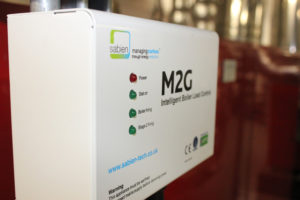The short answer to this is “yes, of course they are”. Boilers potentially consume a great deal of energy so they need to be controlled effectively. To that end there are several “layers” of boiler control commonly in use and it is important to understand what each can achieve – and the limitations of each. This will help decide whether additional boiler controls will deliver further energy savings while not conflicting with your existing building controls.
What types of boiler control are commonly used?
It is quite common for commercial boiler plant to use a number of control elements, such as boiler sequencing, weather compensation, demand control and modulating burners. Many of these are delivered through standalone controls or via a building management system (BMS). However, it is rare for even a combination of such controls to be capable of managing every aspect of boiler performance. As a result, boiler load optimisation controls are being widely installed to deliver additional savings.
Understanding the limitations of existing controls
This can be illustrated by considering weather compensation and BMS. Weather compensation (aka weather optimisation or variable temperature control) can be very effective but does have limitations. For example, its variable temperature approach is not appropriate for constant temperature systems such as fan convectors or air handling units. Also, most buildings require constant domestic hot water.
Building management systems are typically configured to control the heating system as a whole from the common header (the blended temperature of all boilers), rather than monitoring and controlling each individual boiler. This means, for example, that a BMS is unlikely to detect or control energy wastage through boiler dry cycling at individual boiler level.
The need to control individual boilers
Boiler dry cycling is a symptom of standing losses (heat lost via the boiler casing and flue) and occurs within individual boilers. Importantly, even the latest boilers with modulating burners, sequencing and BMS control are likely to be suffering from boiler dry cycling.
Sabien’s M2G boiler load optimisation controls will ensure dry cycling is identified and prevented – delivering energy savings of between 10% and 25% with payback typically of less than two years.
Crucially, M2G is compatible with all BMS control strategies – unlike some other types of retrofit controls. For example, if the control lowers the boiler’s designed set point it will very likely cause conflicts with weather sequencing or BMS. It is important to understand how the boiler control delivers savings and its compatibility with existing and future BMS control upgrades.
Setting priorities
Some people argue that if you have set up and maintained your BMS correctly there is no point in additional measures. For the reasons explained above, this approach fails to take account of the various aspects of boiler performance that impact on overall energy consumption.
Clearly, if you have already invested in a BMS, and/or other controls, it is essential to ensure they are all working correctly and are maintained regularly. Then it is a matter of determining whether additional investment in other controls will deliver acceptable savings. With typical paybacks of less than two years the case for installing M2G is very strong.
It is equally important that any retrofit control technology being considered is going to deliver on its promises, and that the procedure for verifying energy, cost and carbon savings is clear, transparent and reflects consumption and costs saved. We recommend this should be in line with the International Performance Measurement and Verification Protocol (IPMVP).
For further information www.sabien-tech.co.uk




